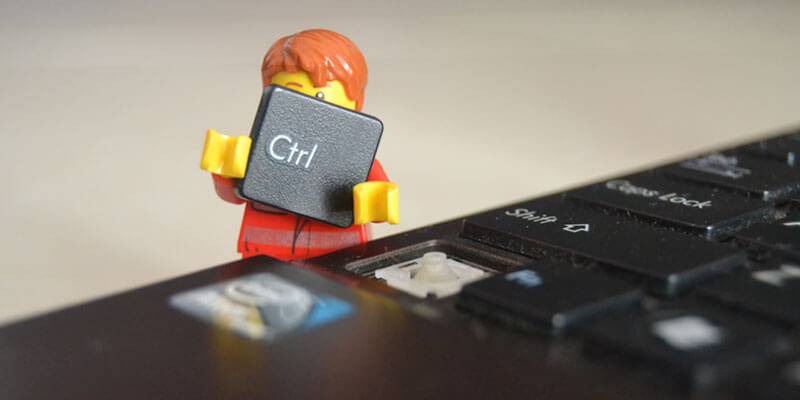Utilitzes correctament els signes de puntuació en anglès? Encara que pugui semblar impossible, els errors puntuant o afegint caràcters en un text són més comuns del que creus, i en anglès passa el mateix. No només n’hi ha prou amb parar atenció a les regles de puntuació pròpies de l’idioma, sinó que cal ser conscients que aquestes són diferents a les que fem servir normalment, encara que hi hagi moltes que si coincideixin.
Ja sigui per les presses, per escriure sense parar atenció o per no donar-li la importància que es mereixen, la puntuació és un aspectes del llenguatge escrit que sempre surt perjudicat per la falta d’implicació en escriure. I això no és el pitjor, no afegir els signes correctes pot canviar completament el significat d’una frase. No és el mateix dir “Let’s eat Grandma” (Anem a menjar a l’àvia) que “Let’s eat, Grandma” (Anem a dinar, àvia).
A més, si no estem atents podem caure en errors tan típics com els dels punts d’exclamació o d’interrogació, ja que els que parlem i escrivim en català o castellà, tendim a confondre’ns. Un “double check “de la puntuació mai estarà de més.
La clau per utilitzar cada signe de puntuació sense cap errada és saber identificar cada un dels caràcters que poden donar-se en un text escrit, així quan ens dictin un text, ens ho lletregin o haguem de escriure-ho de sentides sabrem què significa cada un i com hem d’utilitzar-lo.
A continuació, t’expliquem tots els secrets dels signes de puntuació en anglès i altres caràcters especials que més s’utilitzen:
Full stop or period (.) – Punt i a part
- The end of a sentence which is not a question or an exclamation.
Paris is the capital of France.
- Abbreviation, e.g. alt. (altitude). However, in British English many abbreviations do not require a period, e.g. Dr, Mr, Mrs, Ms, MA, Phd, CEO, etc.
- Ellipsis: we use a period to indicate that only part of the sentence has been quoted or that it is being left up to the reader to complete the thought.
If only I’d said…well it doesn’t matter now.
- Numbers. In English, we use periods to separate the whole number from the decimal, e.g. $9.53 (we say nine dollars and fifty three cents) or 9.53 (we say nine point five three).
Comma (,) – coma
- Making a list: commas are the most common way to separate one list item from the next.
For lunch, I had chicken, vegetables, dessert and coffee.
- A series of adjectives. However, if an adjective is modifying another adjective we don’t separate them with a comma.
The house we visited was dark, cold, and derelict.
I was wearing my bright blue shirt.
- Enclosing details: we use the comma in non-defining relative clauses to give non-essential information.
James, who lives in the USA, is just sixteen.
- Question tags.
She works in Madrid, doesn’t she?
- When there’s no exclamation mark or question mark at the end of the direct speech, we put a comma
‘ … we can buy the watch online,’ said Jane.
Colon (:) – dos punts
- We use the colon to expand on the sentence that precedes it, often introducing a list that demonstrates or elaborates whatever was previously stated. Be careful, however, not to use a colon when stating an idea that requires naming a series of items.
There are many ways to gain marks in writing exams: careful planning, accurate grammar, a wide range of vocabulary and correct punctuation.
The bag contained: a watch, a mobile and a bag of sweets.
- We also use a colon to introduce a new concept or example (it can be helpful to think that the colon introduces a list that contains only one item), e.g. There’s only one person in the world I love more: my grandmother.
- We also use the colon when we write a time in English, e.g 15:15.
Semicolon (;) – punt i coma
- We can describe the semicolon as half-way between a full stop and a comma. We use semicolons to join phrases and sentences that are thematically linked without having to use a linking word.
People are very worried about the future of the planet; our failure to deal with global warming and conserve resources has put the world at risk.
- We also use semicolons instead of commas to separate a complex series of items in a list. Usually, the items themselves already contain commas.
I went to the circus with John, my mum’s partner; his friend, Joe; and their close friend Janna.
Exclamation mark (!) – signe d’exclamació
- We use the exclamation mark to express surprise or astonishment. We use the exclamation mark when we want to emphasise a comment or short, sharp phrase. We rarely use exclamation marks in professional contexts.
I can’t believe you told him!
Question mark (?) – signe d’interrogació
- We use the question mark at the end of all direct questions, e.g. Are you English?
- We don’t use a question mark in reported questions, e.g. She asked me if I was English.
Other signs and punctuation marks
- At (@) – Arrova
- Hash (#) – Coixinet
- Asterisk (*) – Asterisc
- Hyphen or dash (–) – Guió
- Undersore (_) – Guió baix
- Apostrophe (‘) – Apòstrof
- Quotation marks (“ ”) – Cometes dobles. We can use double inverted commas or single inverted commas for speech. However, we must use the same ones consistently in the text.
- Single quotation marks (‘ ’) – Cometes simples. For quotes that aren’t direct speech, we can’t use double inverted commas, e.g. The sign in the window said ‘Closed’.
- Brackets or parentheses (()) – Parèntesis
- Square brackets (
[]) – Claudàtors
) – Barra vertical

